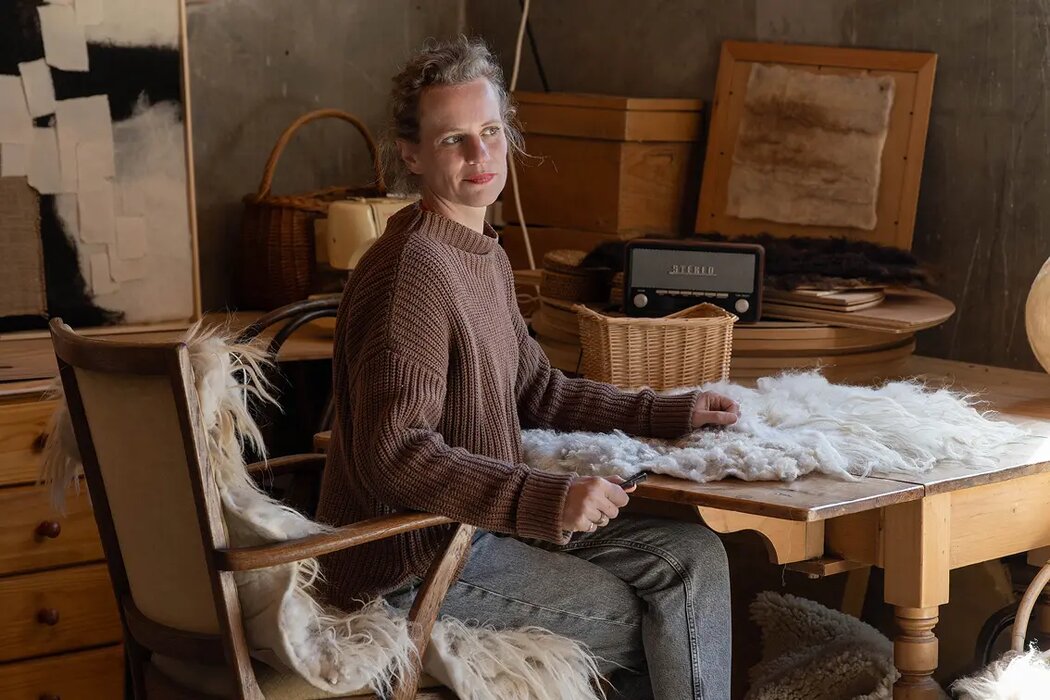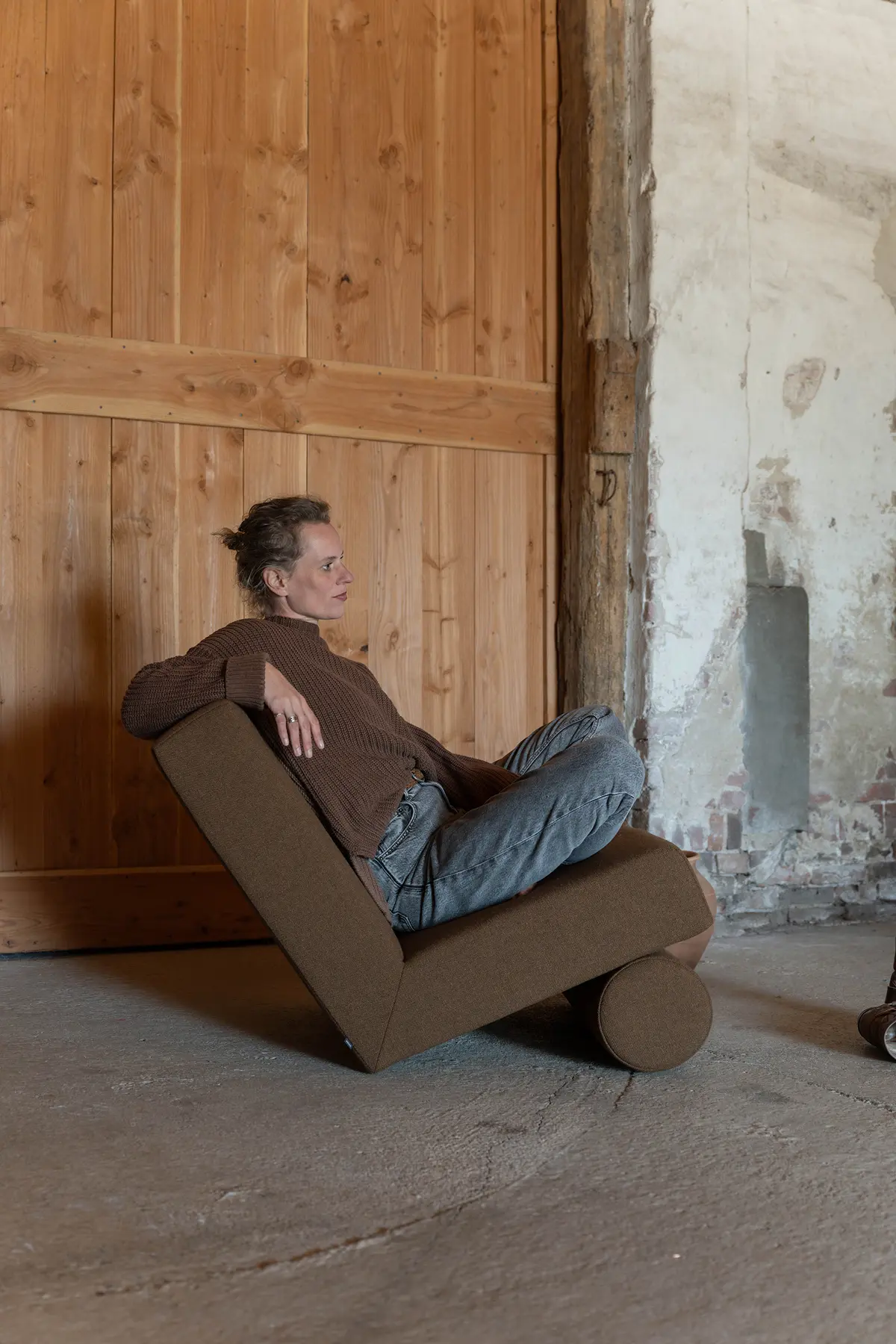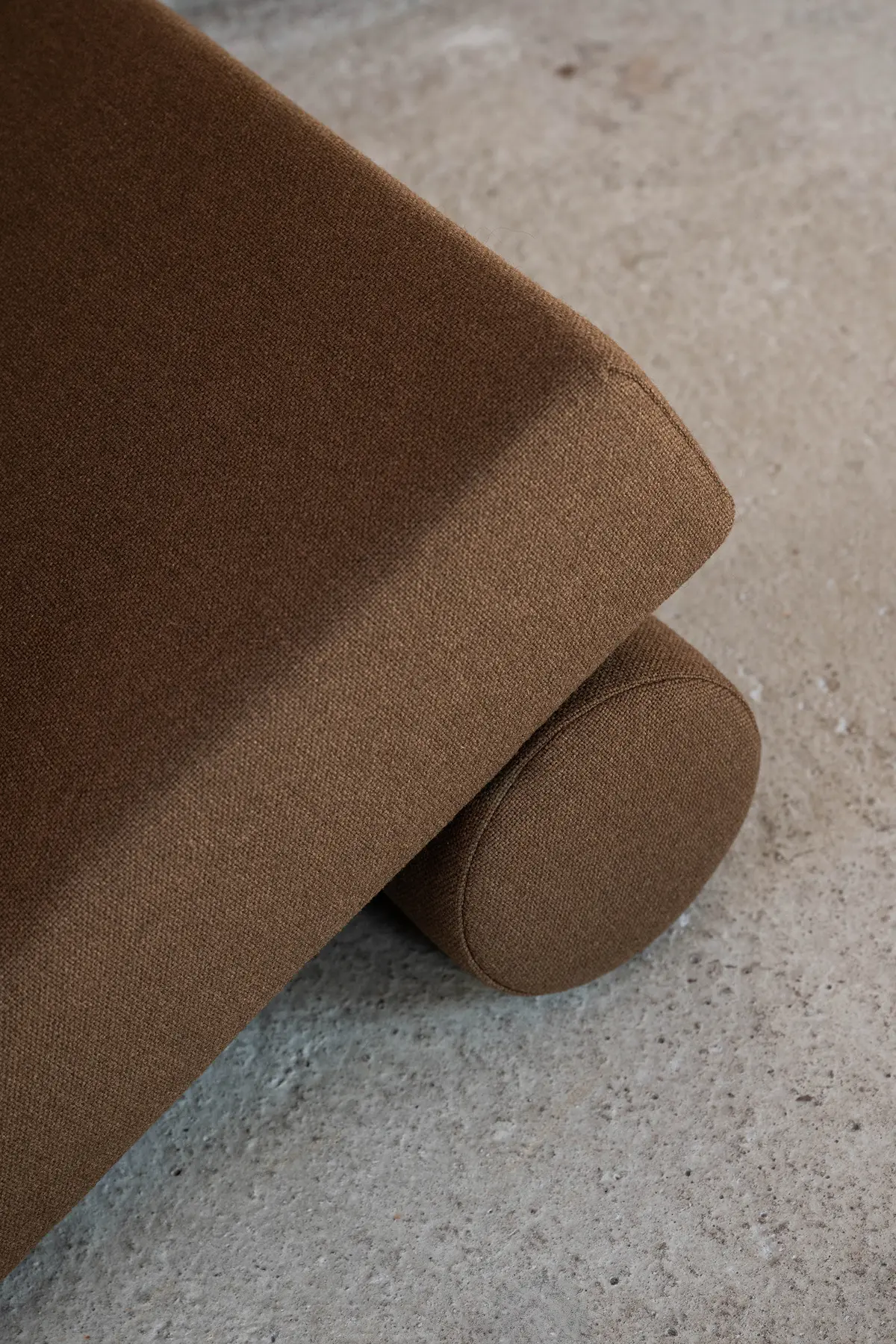HENK Visits Halona
In the series “HENK Visits”, we visit inspiring people to take a look at their daily lives at home. This time, we are in the lively studio of Babette Leertouwer, also known as Halona. Babette creates unique tapestries and works of art from Dutch sheep's wool. She embraces the craftsmanship and imperfections of the material and draws her inspiration from nature and farm life. We spoke to Babette about her work, her background and how she connects with nature through her designs.
Who are you and what do you do?
Hi! I'm Babette Leertouwer. I make tapestries and artworks from wool sourced from sheep shorn in the Netherlands.
Why did you start doing this work?
After studying textile art, I worked for a number of large companies. There, I noticed that they often worked with materials from low-wage countries, produced under conditions that I questioned.
I missed the direct contact with the material and its makers. Because I grew up on a farm, I feel a strong connection to animals, farm life and the old craft. In the Netherlands, sheep's wool is a by-product. I wanted to work with it because I can see with my own eyes where it comes from.
How are you inspired by your work? / How do you get inspired?
I let the material guide me. The wool is the starting point. I look at the structure and the colours, and from there the design emerges.
Wabi Sabi plays an important role in your work. What does this mean to you?
For me, Wabi Sabi is about imperfection. What I like about wool is that sometimes there are leftovers, such as straw or pieces of heather. I deliberately leave these in because they emphasise where the material comes from: nature. You can literally see nature reflected in it.
What is the importance of the old craft for you?
For me, traditional craftsmanship is important because it connects us to what we make. We not only know how something is made, but we also make it ourselves – instead of outsourcing it to somewhere far away. For me, craftsmanship is also a way to get out of my head and engage with my body.
What do you hope people feel or experience when they see your work?
I hope that people start to feel again. The wool is soft and warm – very different from the many plastic materials we surround ourselves with nowadays. I hope that my work connects people with nature and with the local materials we have here.
You call yourself an activist. How do you emphasise this in your work?
I emphasise activism in my work by leaving the straw and pieces of heather in the wool. I don't wash the wool endlessly to remove every trace of nature – as is often the case with the clothes we wear.
My hope is that this will make people ask themselves: how “dirty” is that piece of straw really? For me, the activism lies in that choice: showing that local, unprocessed materials are valuable – perhaps precisely because of their imperfection.
What has shaped your way of working?
I was partly raised by my grandmother. She lived on a farm and lived according to old values. She taught me that you have to make do with what you have. That's why I love working with Dutch wool: you start with what you have, and from there the design emerges. I don't think: let me add something or order something and have it shipped from abroad. No, I work with what is here – with the wool from our own sheep – and that's what I use.
Do you work with other materials besides wool?
I like to work with linen – also a beautiful natural product. The two materials go very well together; the linen enhances the quality of the wool.
You work a lot with earthy colours. Is this a conscious choice?
Yes, earthy colours calm me and help me to ground myself. When people walk in here, they often say: it's so serene and peaceful here. That's exactly what those colours do for me. In a world that often feels hectic, they bring me back to myself.
Why did you choose the Lean Lounge from Studio HENK?
I think the Lean Lounge goes very well with my tapestries. The deep brown colour of the chair really comes into its own in my studio. I'm looking forward to photographing my work with the chair in front of it.


